The new Debden Printing Works
The Bank found a site for its new factory in Debden, Essex.
The location was convenient: the Central Line had recently been extended through Debden, running past the Works itself. It was a direct line between the new factory and the Bank of England’s main building in central London.
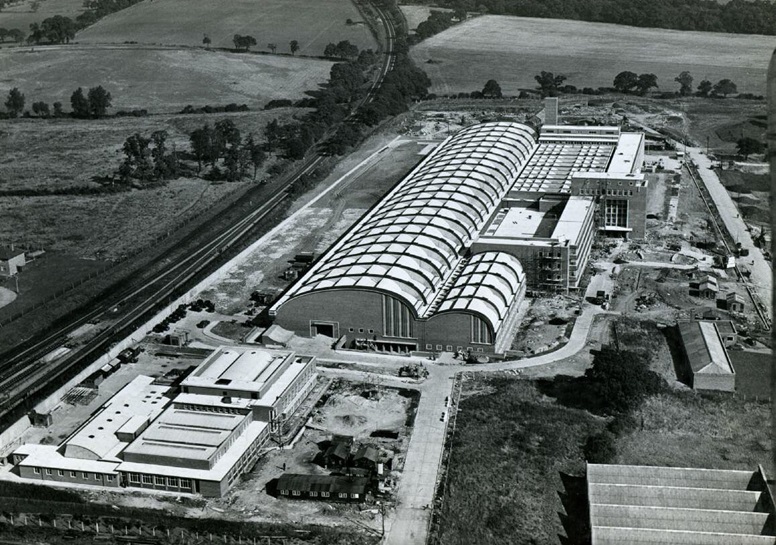
Debden aerial view. Reference no 15A13-6-2-1-4/160
Early construction
During the 1950s, the town of Debden was expanding rapidly.
The homes seen in the background of this photo were built for people whose east London homes had been destroyed during the Second World War. The local authority was keen to attract new employers to the area.
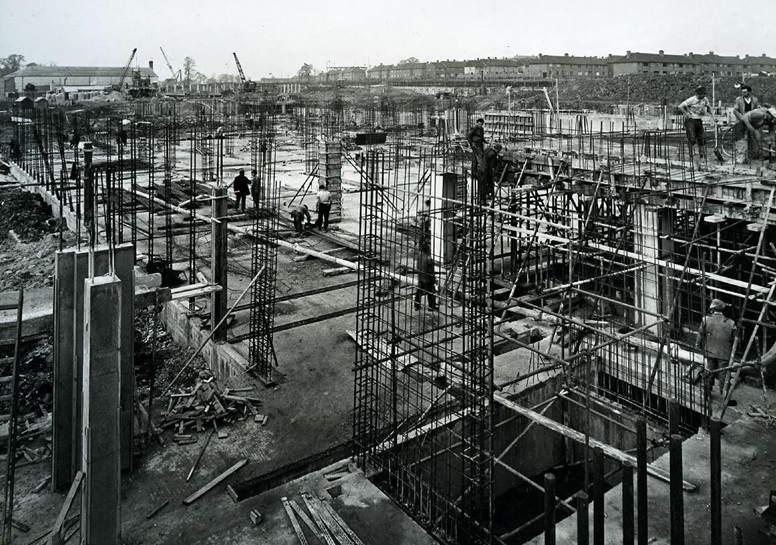
Early construction. Reference no 15A13-6-2-1-2/013
Constructing the main production hall
The new building was designed by the architect Howard Robertson and the structural engineer Ove Arup.
They used reinforced concrete to create a high, arched ceiling for the main hall. The roof didn’t need supporting pillars so there was more space for the production line.
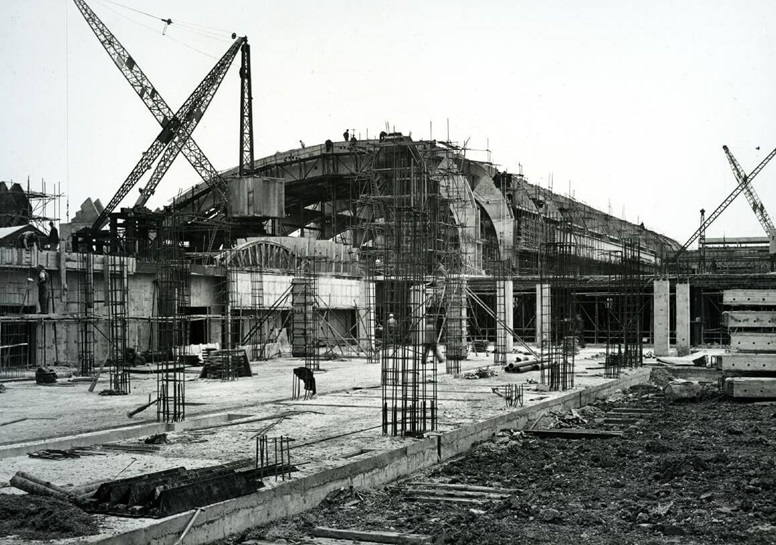
Constructing the main production hall. Reference no 15A13-6-2-1-2/027
Casting the arches
The reinforced concrete roof arches of the main production hall were cast in pieces on site, and then lifted into place.
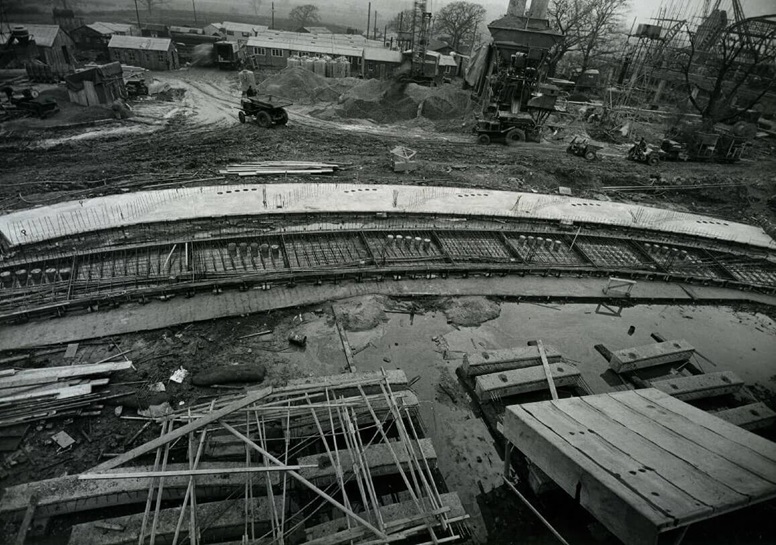
Casting the arches. Reference no 15A13-6-2-1-2/010
Main production hall
One side of the arched roof was set with windows, to maximise the natural light within the hall.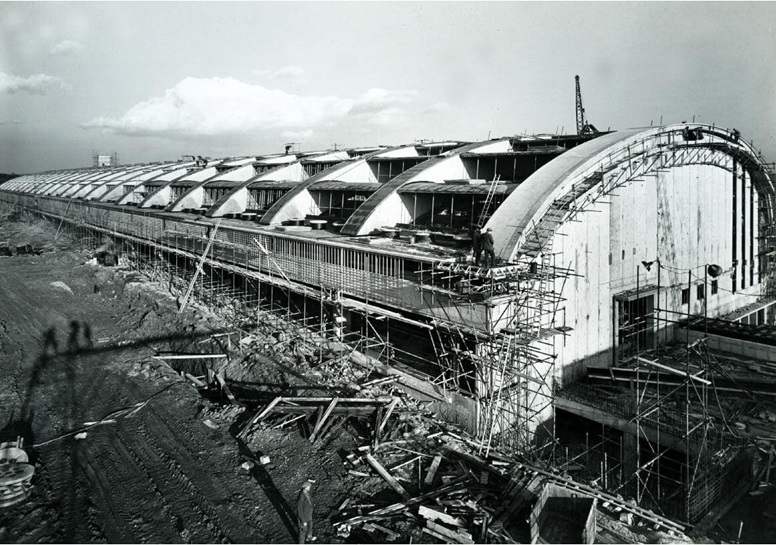
Windows of the main production hall. Reference no 15A13-6-2-1-3/070
Near completion
The two arched halls give the Debden Printing Works a distinctive profile.
The large arch on the left is the main production hall that runs the length of the building. The smaller arch on the right is a much smaller hall. There was also a large administration area, and a separate canteen block.
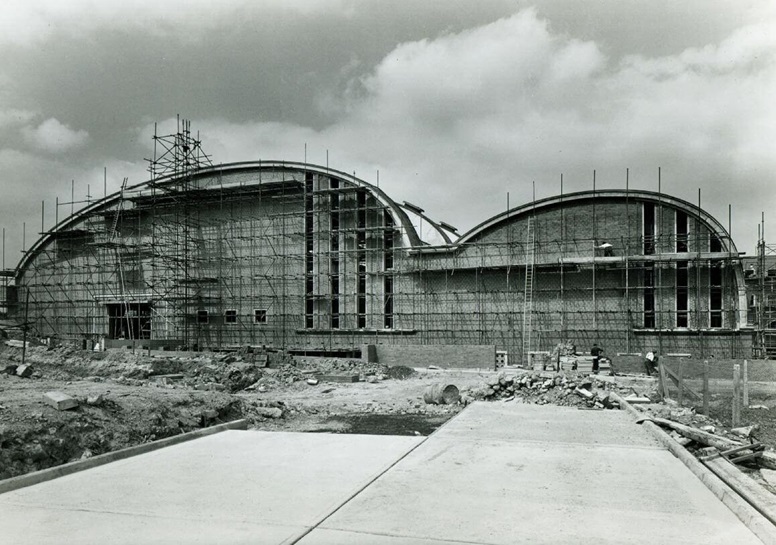
Near completion. Reference no 15A13-6-2-1-3/114
Inside the main production hall
Working conditions in the new building were much better than in the old, cramped premises at Old Street.
Natural light came from large windows running the length of the hall. The wooden parquet floor – still in place today – reduced dust and noise on the production line.
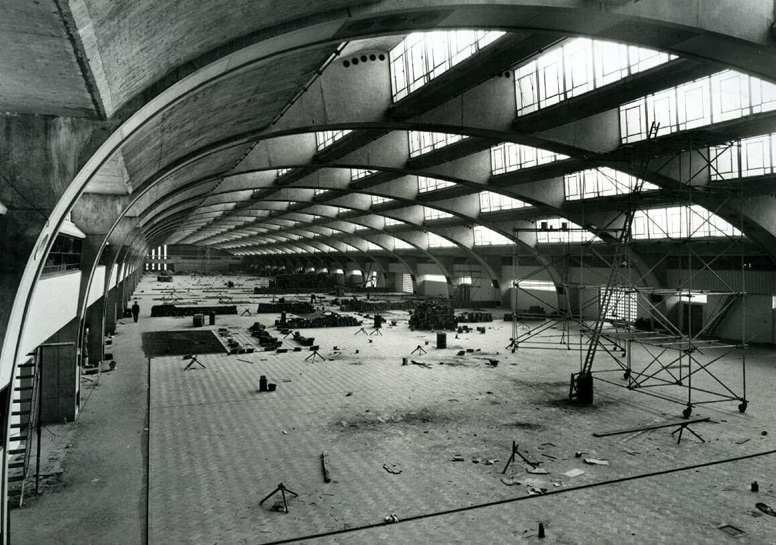
Inside main production hall. Reference no 15A13-6-2-1-4/132
The strong rooms
Secure strong rooms provided space for sheets of banknotes to dry off between stages of the printing process.
They were built next to the main production hall, close to the production line. This reduced the distance the part-printed banknote sheets needed to be moved at each stage, improving both efficiency and security.
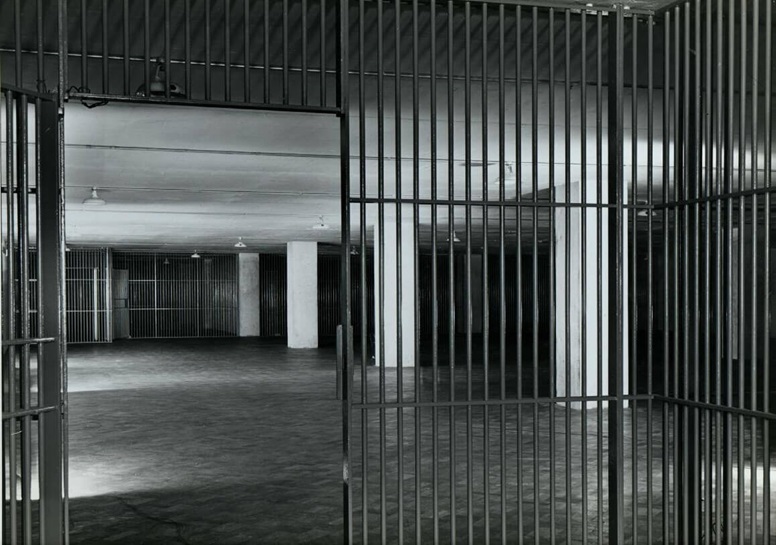
Strong rooms. Reference no 15A13-6-2-1-6/256
The recreation hall
There was a large recreation hall for staff to use during their breaks.
There were tables and chairs, and games like table tennis and darts. It also had a well-equipped stage. The Printing Works had active staff musical and dramatic societies who staged regular performances and revues.
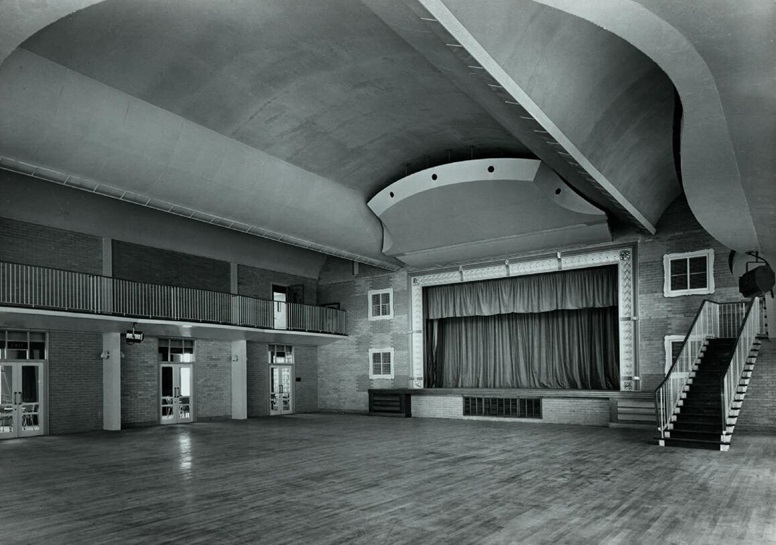
Recreation hall. Reference no 15A13-6-2-1-6/284
Works entrance
By the beginning of 1956, the building was virtually complete. The painstaking process of moving staff and machinery from the old site could begin.
Banknote production at Debden began in March 1956. To this day, every Bank of England banknote in circulation has been manufactured at the Debden Printing Works.
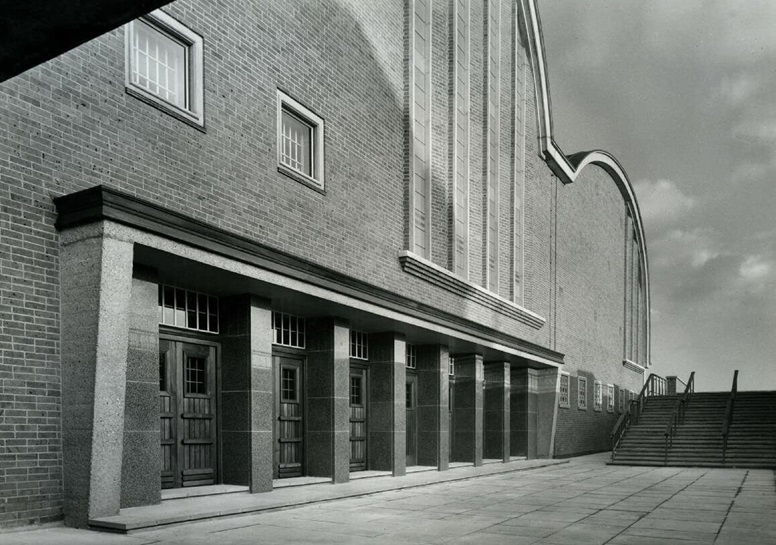
Works entrance. Reference no 15A13-6-2-1-5/239
